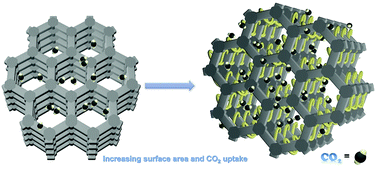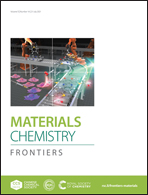Increasing the surface area and CO2 uptake of conjugated microporous polymers via a post-knitting method†
Abstract
The synthesis of high-surface-area porous organic polymers (POPs) for CO2 capture and storage (CCS) has received significant attention from researchers. However, the construction of POPs with a large surface area still remains challenging in synthetic chemistry, because of the complex formation process of the porous skeletons. Herein, we developed a facile post-knitting method to increase the surface area of conjugated microporous polymers (CMPs) to improve the CO2 adsorption capacity. Four CMPs were knitted using two different cross-linkers via a Friedel–Crafts reaction to obtain eight CMP-based hyper-crosslinked polymers (KCMPs), respectively. These resulting KCMPs exhibit a high Brunauer–Emmett–Teller (BET) surface area and total pore volume up to 2267 m2 g−1 and 3.27 cm3 g−1, which are 2.3 times and 8.8 times higher than the corresponding CMPs, respectively. In addition, these KCMPs show obvious increases in the CO2 uptake with the best-performing KCMP-M4 of 3.98 mmol g−1 (89.2 cm3 g−1) at 1 bar and 273 K, an increase of 122.2% compared to the pristine CMP-4. This post-knitting method can provide more potential porous adsorbents for CCS technologies and could be used to further develop novel methods for the synthesis of high-surface-area POPs.

- This article is part of the themed collection: 2021 Materials Chemistry Frontiers HOT articles


 Please wait while we load your content...
Please wait while we load your content...